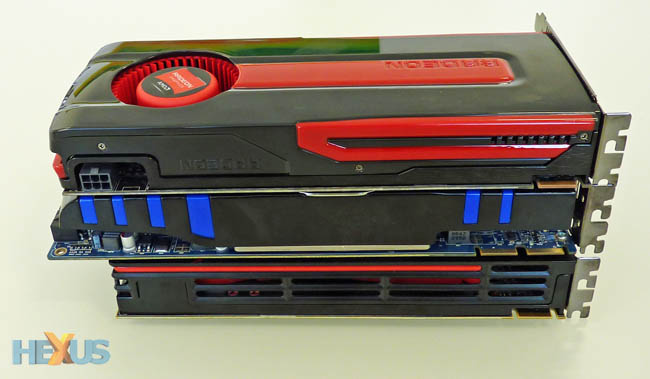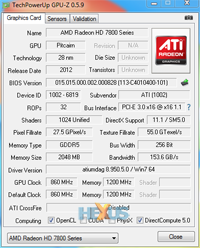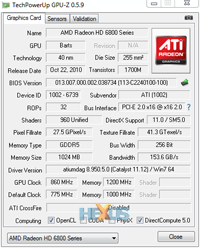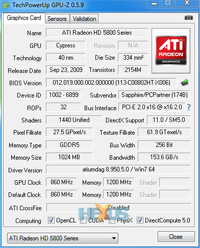Setting the stage
The question
Set to be available to purchase in a couple of weeks' time, AMD filled out its graphics-card line-up with the announcement of the £185 Radeon HD 7850 and £260 Radeon HD 7870. We encourage you to read all about them by jumping on over to this link.
As a quick recap, the two new GPUs offer solid performance at their price points, and we finished off the review by saying "Our advice would be to consider these cards if you're upgrading from GPUs that are at least two, preferably three, years old: they are amongst the best cards for their price points, based on our analysis of speed, price and power."
AMD has made architecture changes in the last three generations of enthusiast graphics cards, and the company has followed a simple-to-market path when jumping from one particular GPU to its nomenclature successor. For example, Radeon HD 5850, HD 6850, and HD 7850 can all be tied together under AMD's branding easily enough, obviously, but they've been designed with different focus in mind.
A question bandied around the office during the run-up to the HD 7870/50 launch centred on what improvements, if any, AMD has made with successive graphics cards based on the same family? Also, with a view to understanding architecture potency and just how the same-model VLIW and GCN architectures perform against one another, what would happen if the last three iterations of a particular family were run at the same clockspeeds, bringing architecture very much to the fore. Food for thought, huh?
The answer
It's common knowledge that Radeon HD 7850 ships with frequencies of 860MHz core and 4,800MHz memory. Step back one generation and the model-equivalent card, Radeon HD 6850, tips up at 775/4,000MHz, while go back further and the venerable Radeon HD 5850 chimes in at 725/4,000MHz. Assuming that decent-clocking samples are readily available it's not a push to suggest that older-generation cards can be persuaded into running at the HD 7850's speeds, though one would need a quality HD 5850 to operate at 860/4,800MHz with utter stability.
The same-clocked argument can be extended to Radeon HD 7870, HD 6870 and HD 5870, as well, but we reckon the 'budget' Pitcairn is of more relevance to our readers. So in an effort to compare three generations of Radeons that boast the same nomenclature we have pitted them up against one another and manually adjusted the frequencies to match the HD 7850's.
The vital stats
Before we show you just how Radeon HD 5850, 6850 and 7850 compare against one another - reproach yourself if there's an urge to jump to benchmarks - it's useful to appreciate what makes them tick. Any figures in brackets denote the stats once the clocks are matched up to the HD 7850's.
| GPU | Radeon HD 7850 (2,048MB) |
Radeon HD 6850 (1,024MB) |
Radeon HD 5850 (1,024MB) |
|---|---|---|---|
| Codename | Pitcairn Pro | Barts Pro | Cypress Pro |
| DX API | 11.1 | 11 | 11 |
| Architecture | GCN | VLIW5 | VLIW5 |
| Process | 28nm | 40nm | 40nm |
| Transistors | 2.8bn | 1.7bn | 2.1bn |
| Die Size | 212mm² | 255mm² | 334mm² |
| Processors | 1,024 | 960 | 1,440 |
| Default memory | 2GB | 1GB | 1GB |
| Compute units | 16 | 12 | 18 |
| Texture Units | 64 | 48 | 72 |
| ROP Units | 32 | 32 | 32 |
| GPU Clock (MHz) | 860 | 775 (860) | 725 (860) |
| Shader Clock (MHz) | 860 | 775 (860) | 725 (860) |
| GFLOPS | 1,761 | 1,488 (1,651) | 2,088 (2,477) |
| Memory Clock (MHz) | 4,800 | 4,000 (4,800) | 4,000 (4,800) |
| Memory Bus (bits) | 256 | 256 | 256 |
| Max bandwidth (GB/s) | 153.6 | 128 (153.6) | 128 (153.6) |
| Power Connectors | 6-pin | 6-pin | 6+6-pin |
| TDP (watts) | 130 | 125 | 150-plus |
| GFLOPS per watt | 13.55 | 11.9 | 13.92 |
| CrossFire Support | 2-way | 2-way | 4-way |
| Release Date | March 5, 2012 | December 15, 2010 | September 30, 2009 |
| Release MSRP | $249 | $179 | $259 |
The analysis
Radeon HD 5850, known as Cypress Pro to the geeks, a star performer of its time, was released 2.5 years ago to general acclaim. Fabricated on a 40nm process and using a die measuring 334mm², AMD used its best silicon for what are now considered the second-rung GPUs - the Radeon HD x950 are the single-GPU champs presently.
Just over a year later AMD relegated the then-introduced 6850 from top-line silicon; it was usurped by the 6950 - which, in truth, retrospectively, would have made the HD 5850 an 'HD 5950.' Die-size shrunk to 255mm² on the same 40nm process, reinforcing the second-best nature of this GPU, or the mess instigated by AMD's product and nomenclature reshuffling, Radeon HD 6850 is now available for a super-tasty £110, if you know where to look.
Fast forward today and the Radeon HD 7850 carries on the same second-best tradition. It, too, has a medium-sized die, albeit with a goodly number of transistors made possible by the 28nm process. A comparison of the trio at their default clockspeeds reveals the HD 5850 has a wider architecture that isn't overly reliant on frequency, HD 6850 is fairly anaemic in both regards, while HD 7850 relies on a mix of frequency and architecture as compensation for its meagre stream-processor count. Factoring in the same clocks shows the HD 5950 HD 5850 to have far greater computational ability.
Given what we can see on the above table and the knowledge that the three cards can all render gaming titles using the latest APIs, one might expect the HD 5850 to walk away with it, making a mockery of AMD's naming scheme. But it's not as simple as that. It rarely is. AMD's move to a Graphics Core Next architecture and massive boost in tessellation performance provides the HD 7850 with some heavy weaponry in this GPU face-off. Let's also not forget that it's the only card in this AMD trifecta that ships with a lush 2GB framebuffer as standard.
The pragmatism
We've already benchmarked the Radeon HD 7850; its performance against 14 high-end GPUs can be found here. Busting open the stock cabinet and trying various Radeon HD 6850s, with a view of running at 860/4,800MHz frequencies, highlighted that memory speed was the primary concern. Unperturbed, we found a reference card that was coerced into operating at the required clocks: huzzah.
Sapphire provided HEXUS with a Radeon HD 5850 TOXIC graphics card whose overclocking potential made this comparo possible. It managed the requisite speeds without even troubling the voltage lines: lovely.

And here are the dutiful trio, all able to run at the HD 7850's 860/4,800MHz frequencies, as shown by the GPU-Z shots below.
Three Radeons from the last three generations. Each shipped with a different MSRP, product-stack positioning, and frequencies. What ties them together is a familial name: Radeon HD x850. Let's now see which card deserves that branding the most, especially when clocked in at the same speeds.












